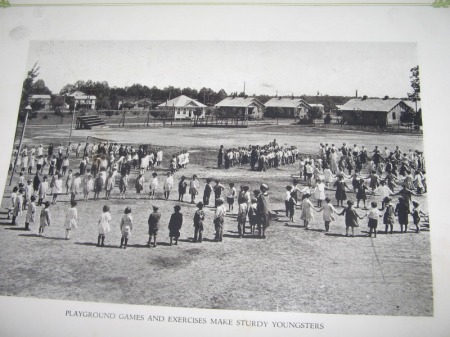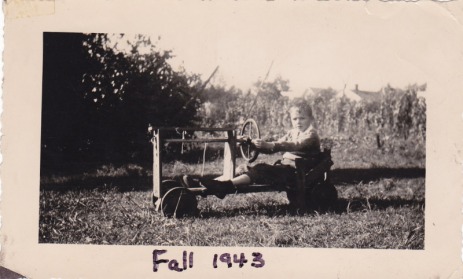
Courtesy of Sarah Murray
September
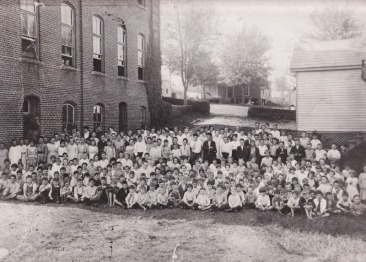
September meant back to school for many children in the mill villages…
Schools were built by the Cone family to serve the needs of the villages. Each neighborhood had their own primary school. In the 1920s and 1930s, John Wyrick recalls traveling among the homes and make-shift classrooms while the White Oak school was being built:
“I went to White Oak School; we started off in the first grade in a classroom above the old drug store. My teacher was Miss Johnson. When I left the first grade and went to second, I went to those stucco houses up the hill there, on Hubbard Street; Miss Lindsey was my second grade teacher. Across the street I went to third grade over there that was Miss Tinges. Then I went to the brick school house over there, Miss Jones was my fourth grade teacher…”
After grade school, most mill village children went on to Proximity Junior High.
“We were a city school, Proximity was. And I think Cone had built it, built the school. But it was still a city school. As far as who hired the teachers and all that, I don’t know. I know that some of the teachers that taught my mom and dad also taught my brother and sister and myself. So the teachers were there for a long time…But it was a city school but Cone had built it.”
From here, in earlier years, most mill villagers went on to Greensboro Senior High School, present day Grimsley High School, but in later years they also attended Walter Hines Page High School and James Benson Dudley High School. For many mill villagers, this was the first time they were educated outside of the mill villages, and some times it was the first time they encountered large numbers of non-mill villagers.
Ruth Wyrick recalls: “You met a variety of different people, it wasn’t like mill village because everybody knew everybody, and it was the same lifestyle, but when you got to high school that kindly changed [there were] more people from different places, so it was different.” As Becky Weaver remarked on some of the difficulties and stereotyping she faced upon entering high school, she concluded by saying: “Like I said my roots go deep, and I just wanted to go back to the people I had really, really grown up with.”
However, not all children in the mill villages were able to attend school all the way through to high school. Many children had to drop out of school in order to go work in the mill and help support their families. This was particularly true during the Great Depression of the 1930s, as well as, during both World Wars, with many young men leaving school to join the army.
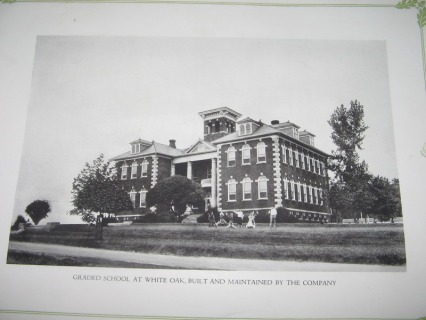
White Oak School (Courtesy of Bernard Younts)
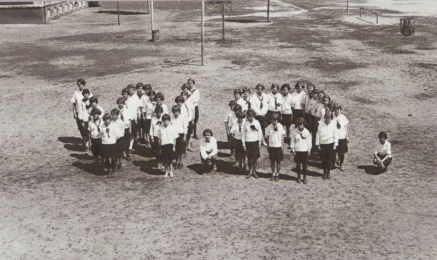
White Oak School Children (Courtesy of Lillie Crum)
October
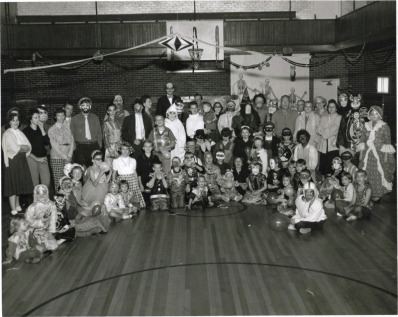
Halloween in White Oak (Courtesy of Kay Swofford)
Just like today, kids who grew up in the Cone Mill Villages looked forward to Halloween. Mill villagers recall traveling around the neighborhood in packs, knocking on doors and shouting, “Trick or treat!”
“This was the highlight of Halloween night: unsupervised by any adults (because we traveled in packs), we would troop up to Mrs. Cone’s house and knock on the door and say, “Trick or Treat!” She did not answer the door – her butler did – and she gave out full-sized candy bars.” – Brenda Zeigler
Becky Weaver remembers that “we didn’t have a lot of things to do, so we played a few little tricks [at Halloween, but] not really mean“. A popular trick was taking rocking chairs off of a neighbor’s porch and putting them in the pine tree in the front yard.
November
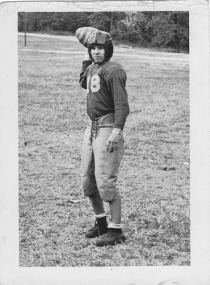
Courtesy of Larky Johnson
Whether using old traditions or creating their own, the mill villages would take time to celebrate Thanksgiving each in their own way.
Pat Smith remembers: Thanksgiving mom would fix something special and decorate table with leaves.
Jim Brewer recalls: “And so you’d raise hogs – one or two – and the mill was closed on Thanksgiving Day, and that was hog killing day. So you’d have fresh pork for supper, rarely did we have turkey, we’d have fresh pork and then there was always meat til spring or summer for us that there was put up. And our minister knew that Dad and his brother and brother in law had 2 hogs, and so he would come over to help, and he’d literally come over to help without expecting anything but also knowing that he would probably walk away with some fresh meat.”


